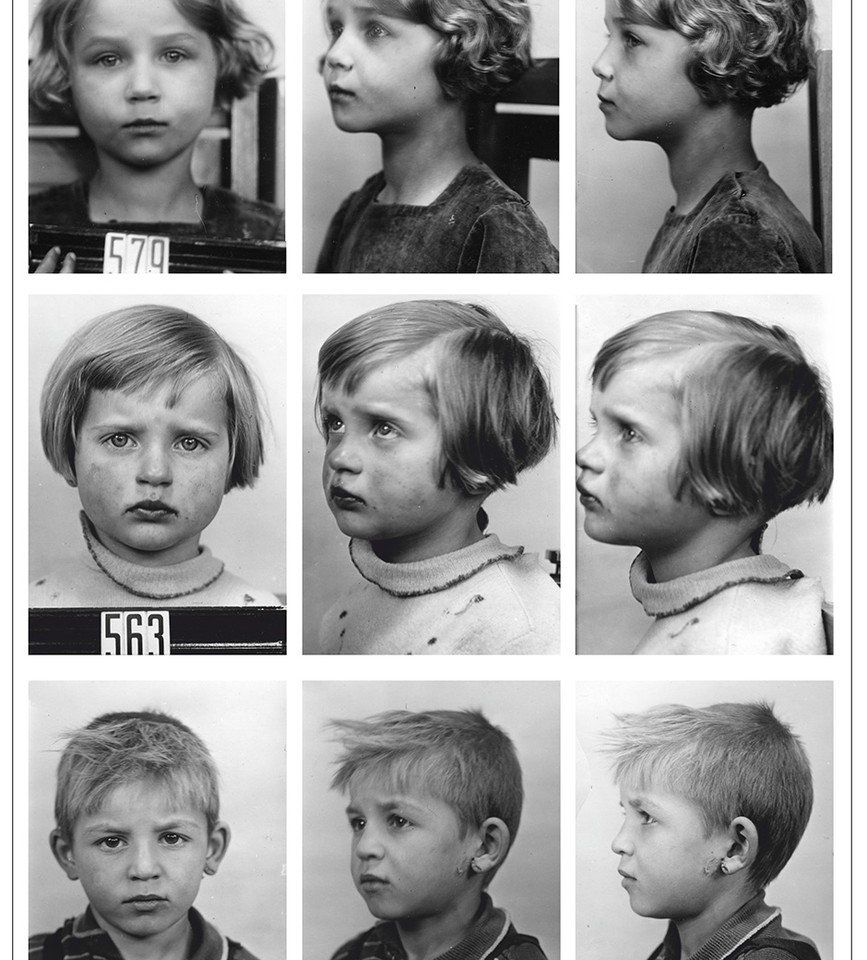
DOROTA NIEZNALSKA \ „Rassenhygiene" wystawa
-
TypRezydencje artystyczne
-
Miejsceprzestrzenie Zachodniego Skrzydła
-
Godzina g. 12 - 20
-
Data od 5.02.2021
do 17.03.2021
Podsumowanie
rezydencji artystycznej Doroty Nieznalskiej w Centrum Kultury ZAMEK
Wystawa
czynna codziennie do 17.03. w g. 12-20, wstęp wolny
ZAPRASZAMY NA WIRTUALNY SPACER:
DOROTA NIEZNALSKA „Rassenhygiene" \ wystawa
Po agresji na Polskę 1 września 1939 r. i aneksji zachodniej części
kraju eksperci do spraw rasy i osadnictwa z SS zajęli się mieszkańcami tych
ziem oraz volksdeutschami przybyłymi tu
z Europy Wschodniej. W ramach zaplanowanej przez Himmlera i jego współpracowników
reorganizacji etnicznej przeprowadzono na szeroką skalę wypędzenia i
przesiedlenia ludności, jak również badania rasowe. Objęły one wiele milionów
ludzi, miały także decydujący wpływ na rozpoczęcie „ostatecznego rozwiązania”.
Około pół miliona Żydów z Polski zachodniej zostało zamordowanych w Auschwitz
albo na miejscu, w ruchomych komorach gazowych w Chełmnie nad Nerem lub w
obozach zagłady na terenie Generalnego Gubernatorstwa. Wymordowanie Żydów miało
być jednak tylko przerażającym wstępem do „germanizacji terenów wcielonych do
Rzeszy”. „Zlikwidowano”, „przesiedlono” albo przeznaczono do pracy niewolniczej
również znaczną część ludności polskiej.
Szacuje się, że poprzez aktywność Głównego Urzędu Rasy i Osadnictwa SS, Rasse- und Siedlungshauptamt, (RuSHA) doszło do największej w dziejach Europy przymusowej wędrówki ludów.
Do zadań urzędu należało przeprowadzanie badań rasowych oraz ocena wartości rasowej ludności populacji podbitych terytoriów w związku z niemiecką polityką germanizacyjną realizowaną na terenach okupowanych przez III Rzeszę.
Projekt Doroty Nieznalskiej polegał na wykonaniu obszernej kwerendy archiwalnych materiałów (głównie w oddziałach Instytutu Pamięci Narodowej na terenie Polski, Instytutu Zachodniego i Archiwum Narodowego w Poznaniu) odnoszących się do działalności Głównego Urzędu Rasy i Osadnictwa SS (Rasse- und Siedlungshauptamt, RuSHA), jak i stowarzyszenia Lebensborn e.V., w szczególności badań na terenie tzw. Kraju Warty (Wartheland). Odnalezione materialne ślady: ankiety rasowe, zdjęcia poddanych badaniom głównie dzieci, były punktem wyjścia do realizacji instalacji Rassenhygiene.
Niemiecka eugenika, higiena ras (Rassenhygiene) – była ideologią stworzoną w celu ochrony
„czystości rasy” i odnowy biologicznej narodu niemieckiego oraz powstrzymania
postępującej fizycznej i umysłowej degeneracji narodów zachodniej cywilizacji,
jaką w drugiej połowie XIX stulecia dostrzegano na Zachodzie. Koncepcje
rodzimej higieny ras ukształtowały poglądy twórców ideologii nazistowskiej, a następnie
determinowały w znaczącej mierze całą politykę III Rzeszy. To właśnie w
ośrodkach Lebensborn stworzono odpowiednie
warunki do „odnowienia niemieckiej krwi” i „hodowli nordyckiej rasy
nadludzi” poprzez dobór i selekcję kobiet oraz mężczyzn przeznaczonych do
rozmnażania w ramach demograficzno-politycznych założeń
nazistowskiej polityki rasowej. Oprócz
oficjalnie deklarowanej działalności stowarzyszenie Lebensborn zajmowało się równocześnie „rabunkiem wartościowej krwi”.
W jego wyniku przymusowo zgermanizowano wiele
tysięcy dzieci, głównie z okupowanych krajów Europy Wschodniej
z Polski, Rosji, Czech,
Ukrainy, Białorusi,
Jugosławii, które następnie przekazywano do adopcji rodzinom niemieckim. Instalacja zawiera m.in. nielicznie
publikowane portrety dzieci poddanych selekcji (na terenie Niemieckiej Centrali
Przesiedleńczej Kraju Warty) i prawdopodobnie germanizacji w celu wzmocnienia
„nordyckości” narodu niemieckiego. Sporo z tych dzieci nigdy nie trafiło z
powrotem do swoich rodziców.
kuratorka wystawy: Jagna Domżalska
Polecamy również warsztaty towarzyszące wystawie, które zostały przygotowane w ramach projektu CPE "Sztuka w ciemno". Wszystkie nagrania są w pełni dostępne dla osób z niepełnosprawnościami.
sztuka w ciemno: warsztaty towarzyszące wystawie
--
Grafika to zestaw dziewięciu zdjęć. W każdej linii widoczne jest jedno dziecko, w trzech różnych ujęciach. Na pierwszym zdjęciu dzieci siedzą na wprost obiektywu, na drugim siedzą lekko bokiem, a trzecie zdjęcie to już ujęcie lewego profilu. Wszystkie fotografie są czarno-białe.

